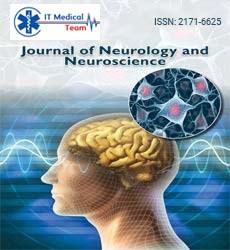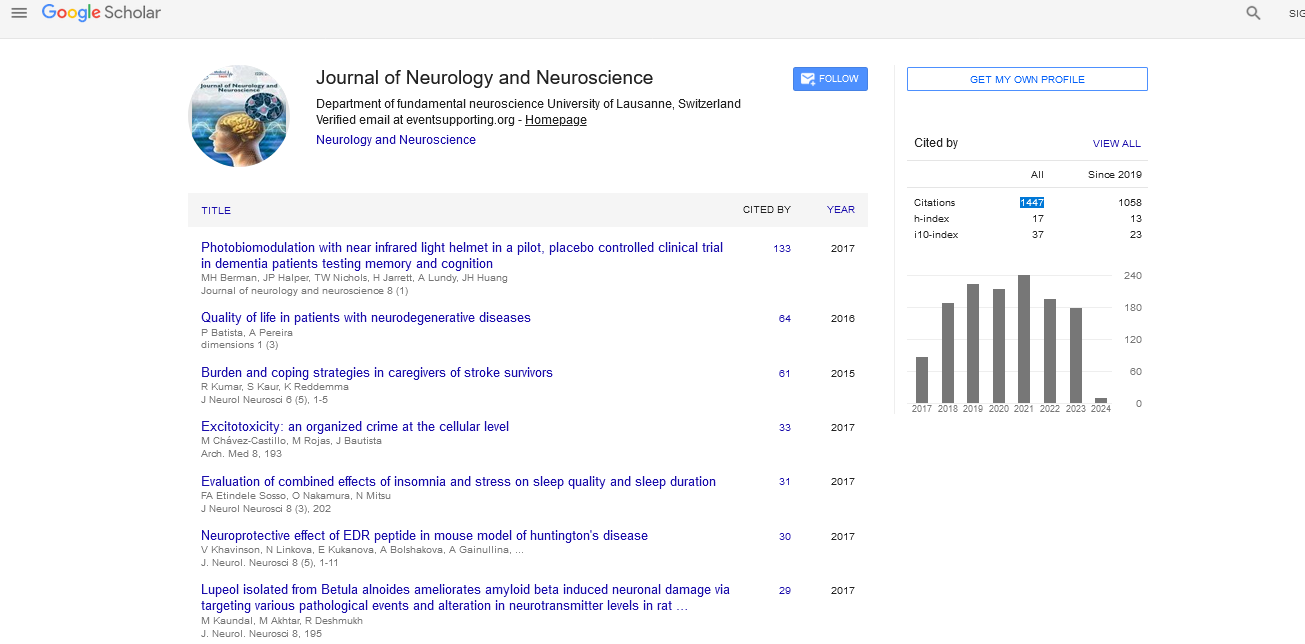Short Communication - (2025) Volume 16, Issue 1
Towards neuromorphic machine intelligence: Integrating functional connectivity for enhanced computational models
Strubell Mukamel*
Department of Neuroscience, Istanbul Medipol University, 34810 Istanbul, Turkey
*Correspondence:
Strubell Mukamel, Department of Neuroscience, Istanbul Medipol University, 34810 Istanbul,
Turkey,
Email:
Received: 30-Jan-2025, Manuscript No. ipjnn-25-15563;
Editor assigned: 01-Feb-2025, Pre QC No. P-15563;
Reviewed: 14-Apr-2025, QC No. Q-15563;
Revised: 20-Feb-2025, Manuscript No. R-15563;
Published:
27-Feb-2025
Introduction
The rapid development of artificial intelligence (AI)
has brought forth transformative capabilities in a variety
of fields, including healthcare, robotics, finance, and
more. Despite these advancements, current AI systems
often struggle with tasks that involve complex, dynamic
processing and the ability to adapt to new situations,
as is the case with human cognition. One potential
solution to these limitations lies in the concept of
neuromorphic machine intelligence, which seeks to model
artificial systems based on the brain’s architecture and
functionality. The integration of functional connectivity
into neuromorphic systems promises to enhance the
capability of AI models, making them more adaptive,
efficient, and capable of simulating higher-order cognitive
functions such as learning, memory, and decision-making.
In this paper, we explore how integrating functional
connectivity into neuromorphic machine intelligence
could pave the way for enhanced computational
models that are not only more powerful but also more
biologically plausible. By understanding the dynamics of
neural circuits and their connections, we can improve the
design of intelligent systems, pushing the boundaries of
AI and opening the door for more efficient, human-like
computational models [1].
Description
Neuromorphic machine intelligence refers to the
creation of computational systems that mimic the
structure, function, and processes of the human brain.
These systems are inspired by the brain's ability to
perform complex tasks with remarkable efficiency
and adaptability. While traditional machine learning
models often rely on centralized computation and
large datasets, neuromorphic systems aim to mimic the
brain’s decentralized, parallel processing approach to
information processing. One of the key features of the
brain that neuromorphic systems attempt to replicate
is its use of neurons and synapses. Neurons in the brain
communicate through electrical signals, transmitting
information to one another via synapses. Neuromorphic
systems use similar structures—artificial neurons and
synaptic connections—that are designed to emulate the
dynamics of biological neural networks. These systems
are particularly powerful when it comes to tasks such as
pattern recognition, sensory processing, and decisionmaking,
as they leverage parallel processing to solve
problems efficiently. Neuromorphic systems also take
advantage of plasticity, the brain's ability to rewire itself in
response to experience. Through this process, the strength
of synaptic connections changes over time, allowing for
learning and memory formation. This adaptability makes
neuromorphic systems highly promising for real-world
applications, such as robotics, where constant learning and interaction with the environment are essential for
optimal performance [2].
Functional connectivity refers to the temporal
correlations between distinct brain regions or neural
circuits. While structural connectivity represents the
physical connections between neurons or brain regions,
functional connectivity reflects the coordinated activity
and interactions between these regions, which underlie
cognitive and behavioral processes. The human brain is
composed of a vast number of interconnected regions
that communicate with each other in a highly dynamic
and synchronized manner. This coordination allows the
brain to integrate information from various sources
and perform complex cognitive functions like memory,
attention, language, and emotional regulation. In the
context of machine intelligence, functional connectivity
can be thought of as the functional relationships between
different artificial components of a neuromorphic system.
By integrating the concept of functional connectivity
into artificial neural networks, it is possible to create
computational models that more closely resemble the
brain's way of processing and integrating information [3].
The integration of functional connectivity into
neuromorphic systems is important for several reasons.
First, it enhances the adaptive learning capabilities of
artificial systems. The human brain’s ability to adapt to
new stimuli and reconfigure its functional connections is
a key factor in its intelligence. By modeling this adaptive
behavior, neuromorphic systems can improve their
capacity for learning from their environment and make
real-time adjustments to their computations.
Second, functional connectivity can optimize the
efficiency of neuromorphic systems. In biological
systems, the brain efficiently integrates information
across distributed networks of neurons. By replicating
this distributed, parallel processing structure in
artificial systems, we can create AI models that process
information in a more energy-efficient manner, using
fewer computational resources while achieving higher
performance. This would be particularly beneficial in
applications where real-time processing and limited
computational resources are critical, such as edge
computing or autonomous systems.
Third, functional connectivity is integral to enhancing
the contextual understanding of neural networks. In
biological brains, different regions work together in a
coordinated fashion to produce appropriate responses
to environmental stimuli. In contrast, many traditional
AI models struggle to process context and generate
responses that are adaptable and flexible. Functional
connectivity allows for more complex and contextsensitive
interactions between artificial neurons,
improving the system's ability to handle ambiguous,
incomplete, or noisy data.
Lastly, the integration of functional connectivity offers
a more biologically plausible approach to AI, moving it
closer to how the human brain operates. Most traditional
machine learning algorithms do not model the dynamic,
interactive processes of the brain's functional networks.
By including functional connectivity in neuromorphic
designs, AI can become more biologically inspired,
potentially leading to more powerful and human-like
intelligence [4].
The integration of functional connectivity into
neuromorphic systems offers exciting opportunities
across a range of applications. In robotics, neuromorphic
systems that replicate the brain's functional connectivity
could enable machines to perform tasks that require
complex, real-time decision-making and adaptive
behavior. In healthcare, these systems could be used to
develop personalized AI that assists in diagnosing and
treating neurological diseases by simulating the brain's
adaptive learning processes. In autonomous vehicles,
neuromorphic systems could enhance real-time decisionmaking,
helping vehicles to better understand their
environment, predict potential hazards, and adapt to
changing conditions. Additionally, neuromorphic systems
with functional connectivity could be used in smart cities,
where they can optimize energy consumption, traffic
flow, and resource management in a way that is more
efficient and responsive to the needs of the population
[5].
Conclusion
Integrating functional connectivity into neuromorphic
machine intelligence represents a promising direction for
advancing AI systems that are more adaptive, efficient,
and biologically plausible. By simulating the brain’s ability
to coordinate the activity of different neural regions, we
can create computational models that are capable of
handling complex tasks with higher levels of intelligence
and flexibility. As research in this area continues to evolve,
neuromorphic systems guided by functional connectivity
have the potential to revolutionize AI, bringing us closer
to developing machines that think and learn in ways that
are similar to humans.
Acknowledgment
None.
Conflict of Interest
None.
References
- Bradley JA, Luithardt HH, Metea MR, et al. In vitro screening for seizure liability using microelectrode array technology. Toxicol Sci. 2018; 163(1):240-253.
Google Scholar, Crossref, Indexed at
- Yamada T, Watanabe T, Sasaki Y. Plasticity–stability dynamics during post-training processing of learning. Trends Cogn Sci. 2024; 28(1):72-83.
Google Scholar, Crossref, Indexed at
- Samavat M, Bartol TM, Harris KM, et al. Synaptic information storage capacity measured with information theory. Neural Computation. 2024; 36(5):781-802.
Google Scholar, Crossref, Indexed at
- Xiao L, Wang J, Kassani PH, et al. Multi-hypergraph learning-based brain functional connectivity analysis in fMRI data. IEEE Trans Med Imaging. 2019; 39(5):1746-1758.
Google Scholar, Crossref, Indexed at
- Yamashita M, Shimokawa T, Peper F, et al. Functional network activity during errorless and trial‐and‐error color‐name association learning. Brain and behavior. 2020; 10(8):e01723.
Google Scholar, Crossref, Indexed at





